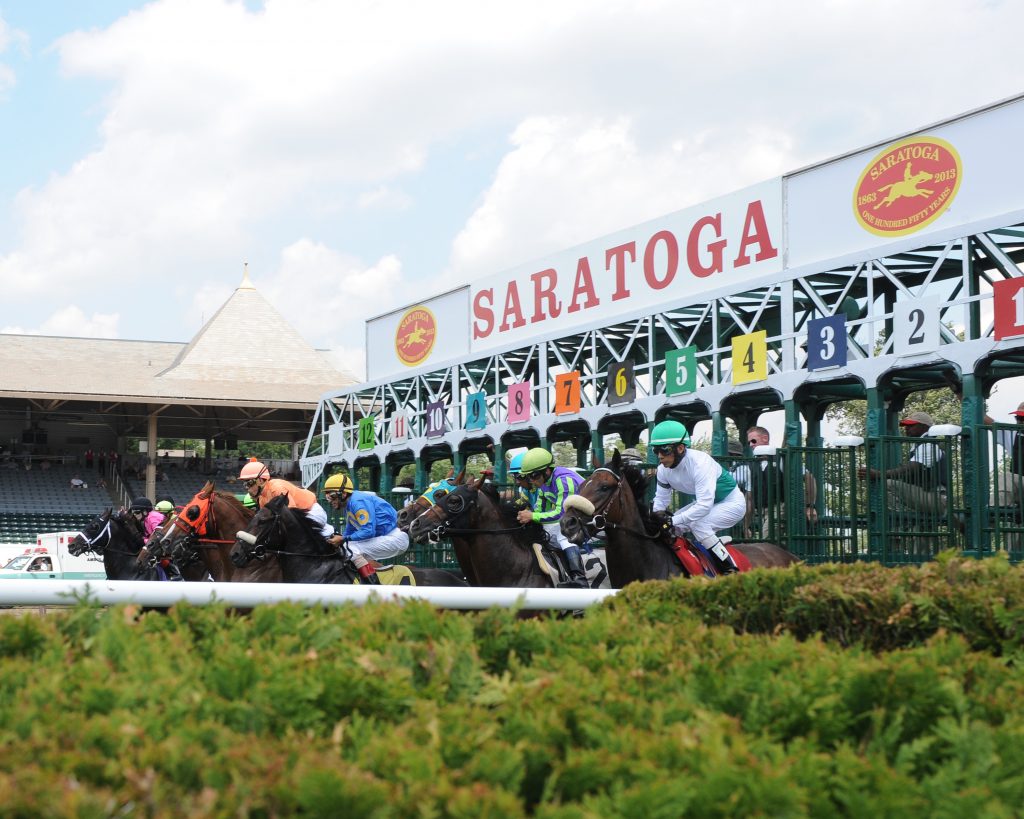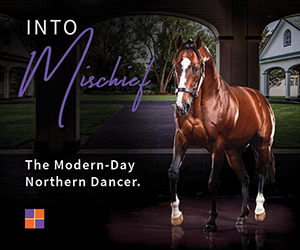
By: Steve Zorn
We are midway through this year’s Saratoga-without-fans race meet. Eighteen days of racing in the book, 21 scheduled in the final four weeks of the meet. At this same point in last year’s meet, we’d had 17 ½ days of racing. So, while it’s not a perfect comparison – for example, the Travers Stakes fell into the first half of the meet this year, instead of its usual position on the penultimate weekend – there’s enough similarity so that comparing numbers from last year and this can yield some tentative conclusions.
First, the good news. Total betting handle through the first four weeks of the meet this year is just under $354 million, compared to $314 million at the same point last year. That’s a 12.8% increase from one year to the next, ignoring the paltry 1% inflation over the past 12 months. But that’s also with some advantages that last year’s Saratoga meet didn’t have: national television coverage on Fox Sports every day; a roughly $6 million boost in handle from this past Sunday’s mandatory distribution of the Jackpot Pick 6 pool; the shift of the Travers to the first half of the meet – though this year’s Travers Day handle was $39.47 million, a 24% decline from the $52.14 million wagered on the 2019 edition of the race; and the luck of having less damage from the cancellation this year of a Wednesday card, compared to last year, when the weather required that a full Saturday card plus most of a Thursday card had to be cancelled.
Making some very rough adjustments for these differences would cut the increase in handle from 2019 to 2020 from $40 million to something more like $10 million, or only about 3% of last year’s adjusted number. That’s better than falling short, but it’s not spectacular. [Note: all handle figures have been calculated from Equibase race charts, available online.]
Now for the not-so-good news. Last year 20% of the Saratoga handle was bet on-track or through NYRA’s own ADW operation, NYRABets. This year, with no fans at the race track, only 9% of total handle is coming through NYRABets, despite NYRA publicity about thousands of new online accounts being opened. Here’s why that matters: NYRA’s blended on-track takeout rate is about 20% (yes, we all know that’s too high, but that’s a story for another day). But NYRA receives only somewhere between 6% and 8% of the money bet off-track through outlets other than its own NYRABets. So, if everything else had been the same, each dollar that was bet through, say, TVG or Twin Spires by someone who last year bet that same dollar in person at Saratoga would return 12 cents less to NYRA and to the horsemen’s purse account.
Now everything isn’t the same, so maybe the damage isn’t quite as serious as it might look at first glance. I don’t have access to NYRA’s contracts with its off-track betting partners (NYRA no longer appears to consider itself a New York State agency, which would have made it subject to the state’s open-records laws). But let’s say that, as one of the country’s premier racetracks, it’s able to get an average of 7% of what’s bet through non-NYRA outlets. We can calculate, using the above numbers, that this year NYRA and the horsemen have so far earned about $6.34 million from NYRABets wagering and $22.56 million from the 90%-plus of the handle that’s bet elsewhere, for a total of $28.9 million.
Last year, when total handle (not counting any adjustments) was a good deal less at this point in the meet, NYRA and the horsemen had received $11.56 million from the (much larger) share of total handle that was bet on-track, and $17.92 million from bets made at other locations, for a total of $29.5 million. In other words, the nearly 13% jump in total handle to date at this year’s Saratoga meet has actually resulted in less money available for NYRA operations and for the purse account. And that’s not counting the loss in ticket sales and concession income from the 20,000-plus fans who went to the races on an average day last year.
Perhaps that’s not so bad. NYRA’s operating costs are surely lower this year (again, we don’t know, since NYRA no longer releases financial reports), and purses have been cut some, in anticipation of lower revenue. And the lingering mystique of Saratoga probably means that a stay-at-home Saratoga-at-Belmont meet would have handled substantially less money. But, while NYRA itself saved money, compared to last year, that wasn’t the case for the owners and trainers who sent their horses and their grooms and hotwalkers up to Saratoga to run for purses that aren’t as good as last year’s. A number of trainers have told me their daily costs are 10-20% higher at Saratoga than at Belmont.
Looking beyond Saratoga, then, long-term omens are not optimistic. The BloodHorse reports that total US thoroughbred handle through July this year was $6.15 billion, a 7% decline from last year. Of course, there are lots of reasons for that difference: among them the lockdown of racing in March and April and the shift of the Kentucky Oaks and Derby to September. But racing was the only gambling game in town, indeed the only major televised sport, for quite a while in the first half of the year, and one might have expected it to capture some of the dollars that couldn’t be bet on other sports. Now, with at least some of those sports and sports books coming back, it’s hard to see where more betting handle will come from.
Twenty years ago, total handle on US thoroughbred races was $13.7 billion, of which 17% was bet on-track. Last year, the total was $11.0 billion, of which only 8% was on-track wagering. In nominal, non-inflation-adjusted dollars, that’s nearly a 20% decline in two decades. When you factor in inflation, the decline is nearly 50%. Looks, sadly, an awful lot like the buggy-whip industry in 1900-1920.



